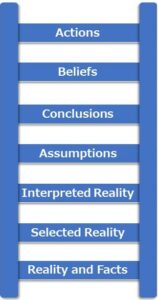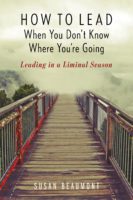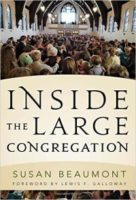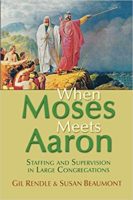In an era when innovation and adaptation are needed, many struggle to break free of old thinking patterns. No matter what we do, our congregations drift back to familiar, settled ways of doing things. It’s time to drop beneath the surface of our actions and challenge outdated assumptions that sustain the status quo.
An assumption is a fact, belief, or value we assume to be true based on shared experience, knowledge, or perspective. Often our assumptions are unconscious filters, developed over years of interacting with our environment.
When the environment changes, we are slow to examine our unconscious filters and adapt our beliefs and actions. We see only what we have always seen, what we expect to see, or even what we desire to see. The choices we make are kneejerk reactions to the meaning-making of our past. Our outdated assumptions prevent us from innovating.
The Ladder of Inference
To illustrate how actions are driven by beliefs and assumptions, organizational psychologist Chris Argyris created the Ladder of Inference. The Ladder of Inference describes the process we go through, usually unconsciously, to move from our experience to a decision or action. The thinking stages can be seen as rungs on a ladder.
We begin at the bottom of the ladder. Here, we experience and observe the world around us—reality and facts. From there, we work our way up the ladder. We select which available facts we will pay attention to—because we are limited in our ability to digest everything. We interpret the selected data through the filter of our previous experience to determine what it means.
We apply our existing assumptions (sometimes without being aware that we are making them), and develop further assumptions based on our interpretation of the situation. We draw conclusions based on the interpreted facts and our assumptions.
We affirm or adjust our beliefs about the situation and our environment, and we take actions that seem “right” because they are based on what we already believe.
Often, as we work our way up the ladder, we find ourselves jumping to conclusions by ignoring data, misinterpreting data, and skipping rungs of the ladder.
Stepping Up
For example, the leaders at First Church want to rebuild in-person engagement post pandemic. Here some steps they have taken up the Ladder of Inference:
- Reality and facts: The church has offered virtual worship during the pandemic and hybrid worship more recently. A great deal has happened, much of it outside the awareness of official leaders.
- Selected Reality: Leaders have been measuring the congregation’s recovery from the pandemic by counting the number of people worshiping in person on Sunday mornings.
- Interpreted Reality: In person worship is lackluster—only 40% of what it was pre-pandemic.
- Assumptions: Leaders believe that the drop in attendance is due to online worshippers who haven’t returned.
- Conclusions: Leaders are concerned that people worshiping from home are not authentically participating in the faith community.
- Beliefs: Leaders worry that the church is encouraging lazy discipleship by allowing people to watch a recorded service—at their convenience.
- Action: Leaders decide to discontinue live streaming worship so that people will come back to church.
As we consider this example, we see immediately that leaders ignored important data and created an ill-formed picture of reality. They made assumptions that may or may not be true and they drew poor conclusions about what motivates the choices of worshipers. In the end, they chose an action that is neither innovative nor adaptive – and not likely to accomplish their stated objective.
Practices for Surfacing Assumptions
There are a variety of practices that can help leaders expand their awareness about assumptions that no longer hold true.
- Work with the Ladder of Inference. When you are engaged in decision making, pause and ask leaders to identify which rung on the ladder of inference they are currently standing on. Then invite them to work their way back down to the base of the ladder to see if there are other data or factors to consider. Finally, invite the group to move up to the top of the ladder. Reflective thinking will often invite innovation.
- Pay attention to shifting patterns. Notice shifts in the facts that don’t make sense based on your experience. “In person worship attendance is down. Financial giving is rising. In the past, these two indicators generally moved in the same direction. What might this shift in the pattern suggest?”
- Challenge the framing of the problem. “Why have we decided that rebuilding worship attendance is the most important focus for a conversation about engagement? Perhaps we should explore how the people who have not “come back” are engaging their faith now?”
- Poke around for surprises and outliers. Look for people or situations who are not behaving the way you would expect them to behave. “I’ve noticed that Greg hasn’t returned to in-person worship, but he is more engaged with service projects than prior to the pandemic. Perhaps we should talk to him about the role that worship plays in his faith life now.”
- Upgrade and expand your circle of dialogue partners. A decision-making group that has been together a long time will have difficulty identifying their own assumptions. Consider adding new people to the group, especially people who have different life experiences.
- Get out of your head. Stop analyzing the problem. Take time for silence and prayer. Go on a nature walk. Write about the challenge in your journal. Try diagramming or drawing the problem without using words.
“We’ve never done it that way before” may be congregational leaders’ least favorite phrase. It indicates that people are clinging to outdated assumptions and beliefs. People can learn to innovate—the process begins with surfacing the beliefs and assumptions that may have informed our past but must not shape our future.
Susan Beaumont is a coach, educator, and consultant who has worked with hundreds of faith communities across the United States and Canada. Susan is known for working at the intersection of organizational health and spiritual vitality. She specializes in large church dynamics, staff team health, board development, and leadership during seasons of transition.
With both an M.B.A. and an M.Div., Susan blends business acumen with spiritual practice. She moves naturally between decision-making and discernment, connecting the soul of the leader with the soul of the institution. You can read more about her ministry at susanbeaumont.com.





